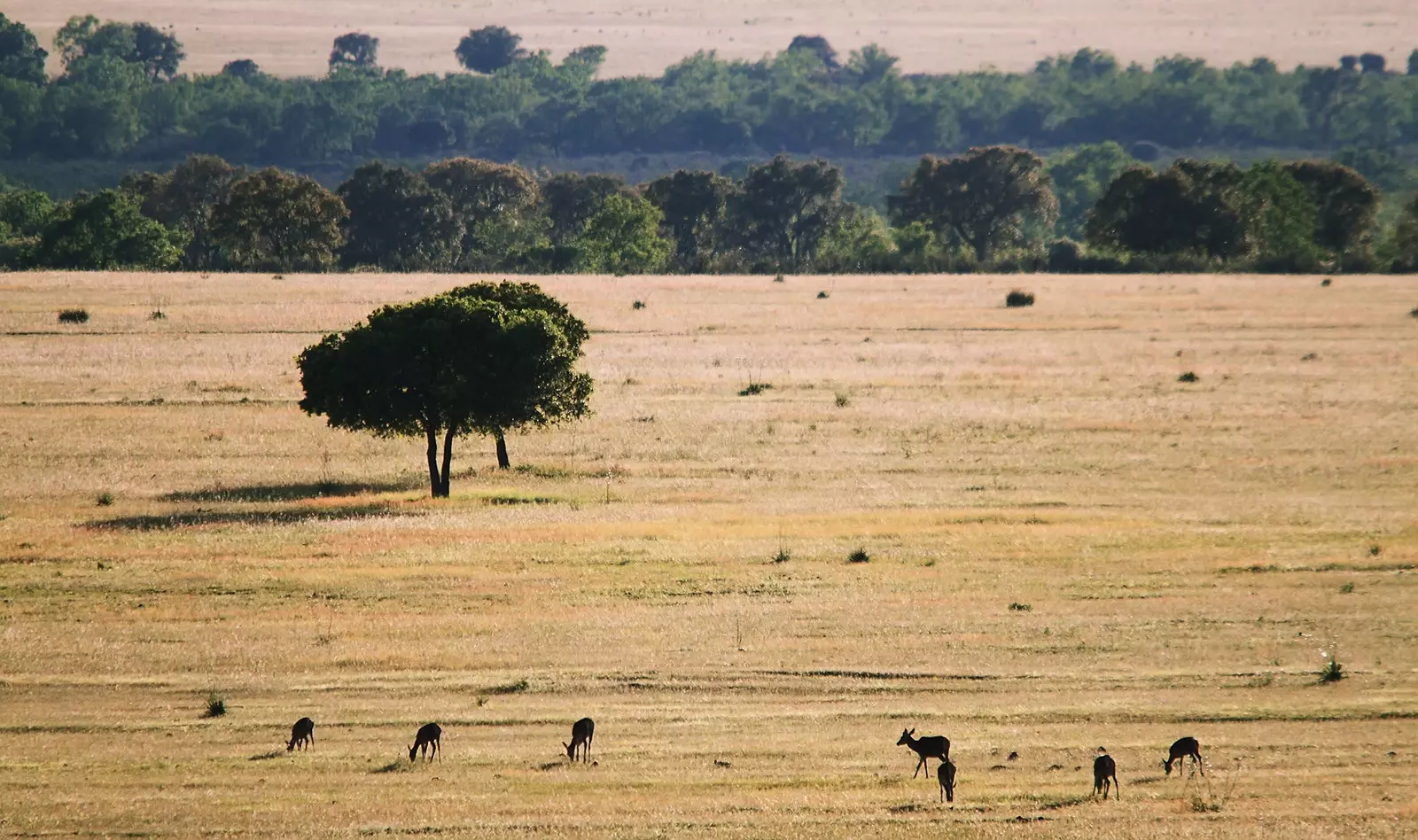
Discovering the 'Spanish Serengeti'
In the early 1980s, the Ministry of Defense planned to turn the area into a firing range for army maneuvers. Ecologists and neighbors shouted to the skies and thanks to their mobilizations they managed to get ** Cabañeros recognized as a Natural Park in 1988.**
Its main asset was to highlight the richness and environmental diversity of its flora and fauna ** (with its emblematic black vultures and its Iberian lynx specimens) **, differentiated according to the areas of raña (plain) and mountain, crossed at all times by multitude of rivers.

Cabañeros can boast of fauna
In nineteen ninety five protection went up National Park, becoming the second in Castilla-La Mancha together with the Tablas de Daimiel. Belonging to the Montes de Toledo, the park is distributed among six towns: two in the province of Toledo, Hontanar and Los Navalucillos , and four from the province of Ciudad Real, Alcoba de los Montes, Horcajo de los Montes, Navas de Estena and Retuerta del Bullaque.
Its sixteen routes can be done on foot. Four are accessible to people with disabilities and two of them can be done by bicycle or on horseback. There is also the possibility of making several accompanied by a guide for free or tour the park in a 4x4. In both cases you must book in advance.
We got up early to go through it all. The excursion starts in Horcajo de los Montes, to the south, from where we will border Cabañeros in the opposite direction to clockwise.
In this town, in addition to an ethnographic museum (open depending on the season, consult before approaching), there is a spectacular Visitor Center on the outskirts.
Models, life-size reconstructions, interactive activities and various videos in its huge projection room they will explain the history of the park, the diversity of its fauna and flora depending on the season of the year and the importance and use of the holm oak, a key tree for its economy. In the future (the concession is pending) it will also have a cafeteria and shop.
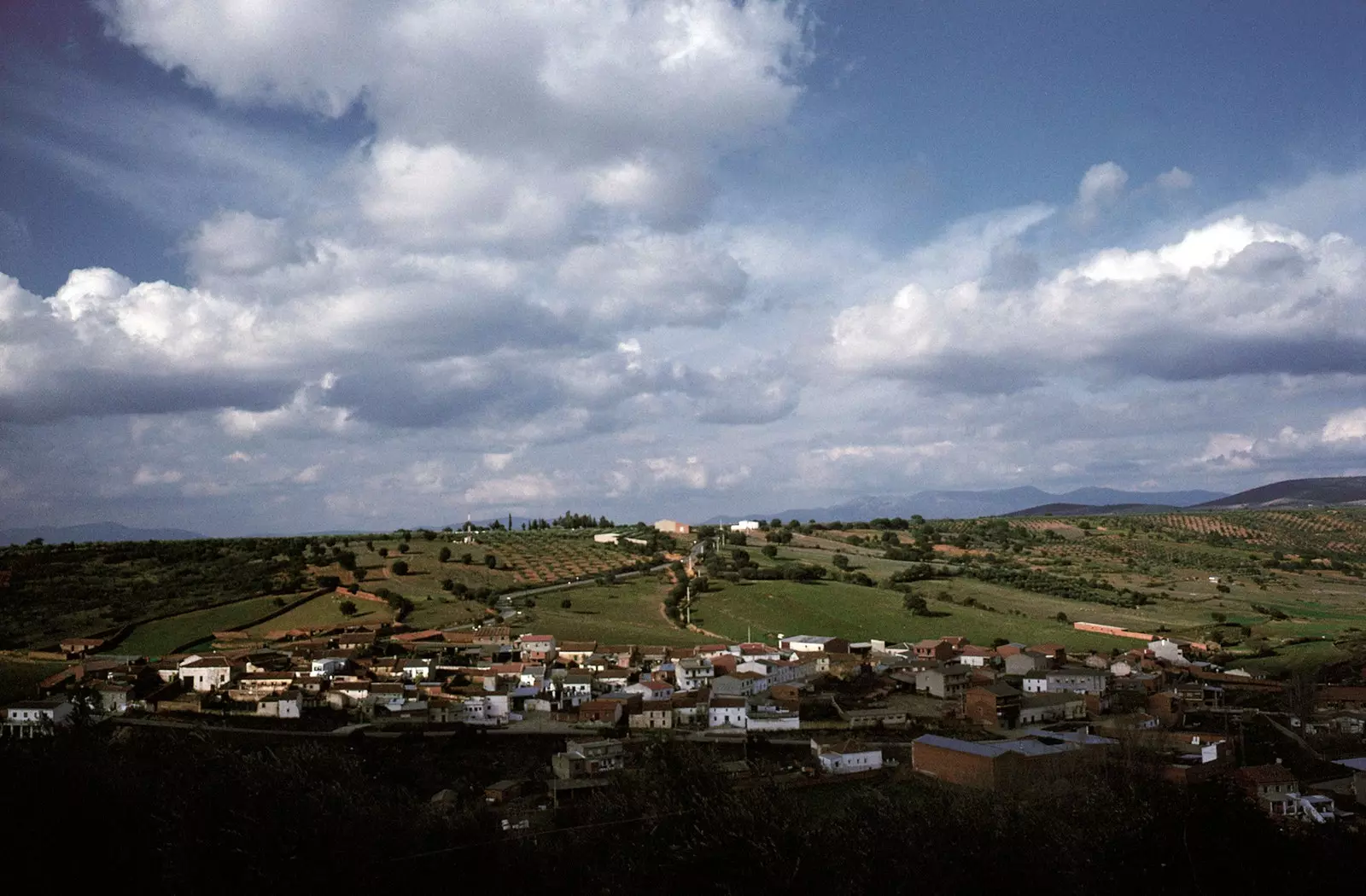
Fork of the Mountains
Three-hour 4x4 excursions also depart from there, which must be booked in advance. We can also undertake on foot the Plaza de los Moros route and the Sierra de Castellar de los Bueyes route, between an hour and a half and two hours long.
We continue our itinerary heading east on the CM-4106. In addition to the aforementioned oaks, the trees that will color our trip at all times will be gall oaks and pines, in addition to the many olive plantations.
after crossing Alcove of the Mountains , which also has its ethnographic museum with an exhibition of utensils related to the traditional uses of the area, we take the path that goes to the left address Santa Quiteria.
We will leave this town on the right and, shortly after, we will have on the left a stork observatory (the entire park is full of nests), although being summer birds in the middle of winter we will have to settle for see some specimens of crane.
Immediately afterwards we stopped at the Chopsticks House , indicated on the left of the road. Two botanical trails (one for the outward and one for the return) link the car park with the interpretation center. Wooden footbridges where you can discover with their corresponding indicative signs more than 60 plant species from the area (trees, plants and shrubs) that aim to show their floristic diversity (we can request a free brochure detailing all of them).
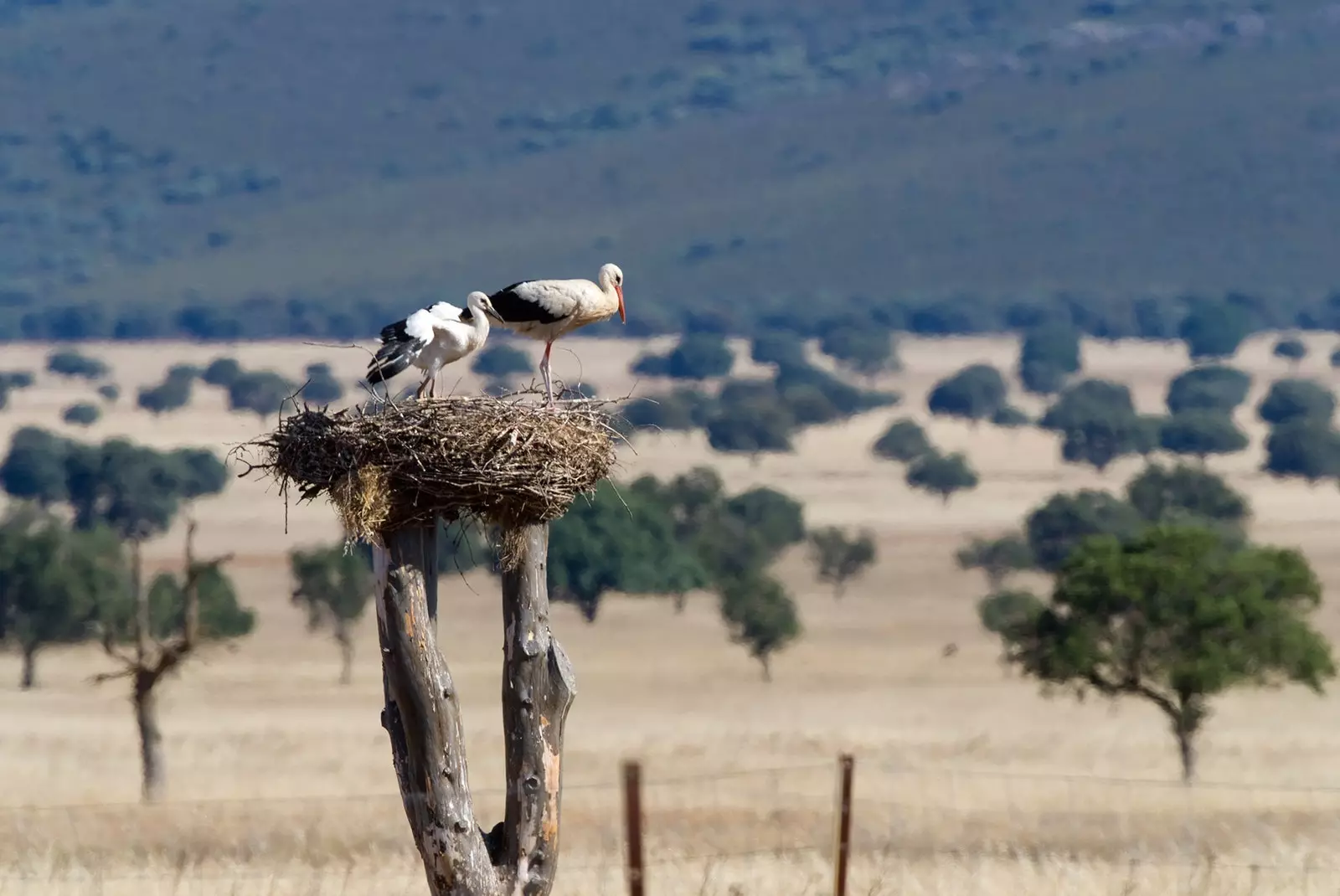
The park is full of storks
Of the center it is worth highlighting its varied collection of fossil remains and its reproductions of the skull of a mammoth and, above all, one of the cabins that give the park its name: cone-shaped straw huts that, since ancient times and until the last century, served as a r refuge to shepherds, charcoal burners and other inhabitants of the place.
Outside we will also find another observatory with a pair of binoculars to spot animals. Let us remember that Cabañeros is known as the 'Spanish Serengeti' and that the best time to see deer and wild boar (the main mammals that populate this flat area of the raña) It is at sunrise and sunset.
It also has an ethnographic path which, like the botany, is circular and accessible to people with reduced mobility.
Back to the car we walk the road to the end to end on the CM-403, that we will take to the left heading north. Soon we will run into the aquatic immensity of the Abraham's Tower Swamp, that in the vicinity of its prey has a recreational area, a botanical trail suitable for people with disabilities with walkways around the riverbed of the river Bullaque and a watcher from where to take panoramic photos.
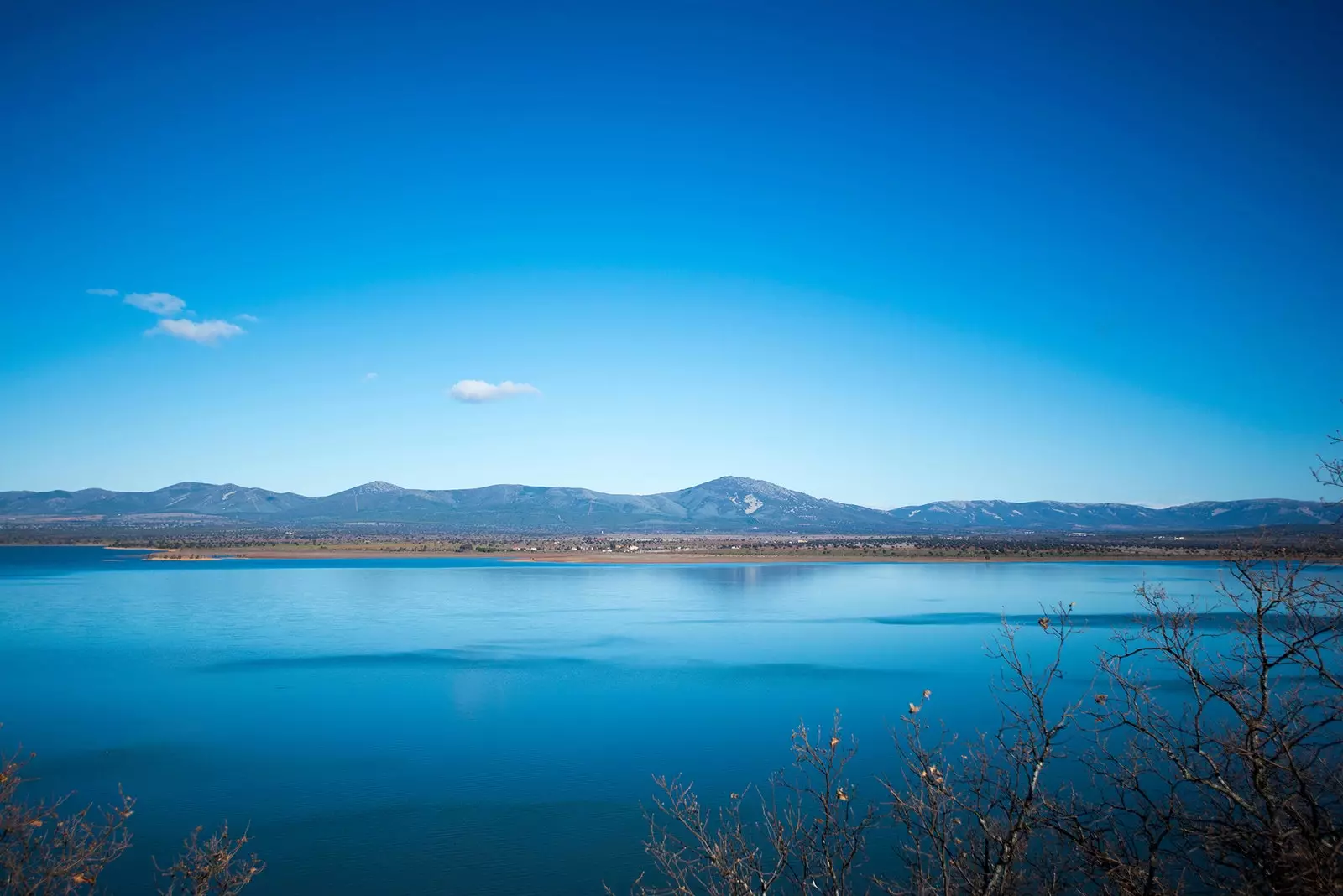
Abraham's Tower Swamp
We continue north, and next to the grinder turn left heading west on the CM-4017. we go through Retuerta del Bullaque , where it is ** Zoorama (fauna museum) , and we reach our final destination, ** Navas de Estena , in the northeast part of the park.
At lunchtime, although the park offers ideal picnic areas to enjoy a sandwich, **we opted to discover the local gastronomy at the Mesón Montes de Toledo**, which we will find next to the road. It offers a menu, à la carte dishes and portions, as well as a terrace at its entrance for the hot months.
Navas has a tourist office and a small exhibition on banditry in the area, but what has really brought us here is the Boqueron Path, What are we going to do to lower the food?
To take it all you have to do is return to the entrance of the town and follow the The signs that lead to the Lincetur campsite. After crossing it we will see a small parking lot, but we can gain another kilometer if we go to the next and last one.
From there, on the left, the route begins crossing the small bridge that crosses the Chorrillo stream. The path runs along its banks until it ends in its tributary, the Estena River, where it rises the most spectacular part of the route: the Torres del Estena, a vertical fault that has these three towers aligned resisting gravity and erosion.
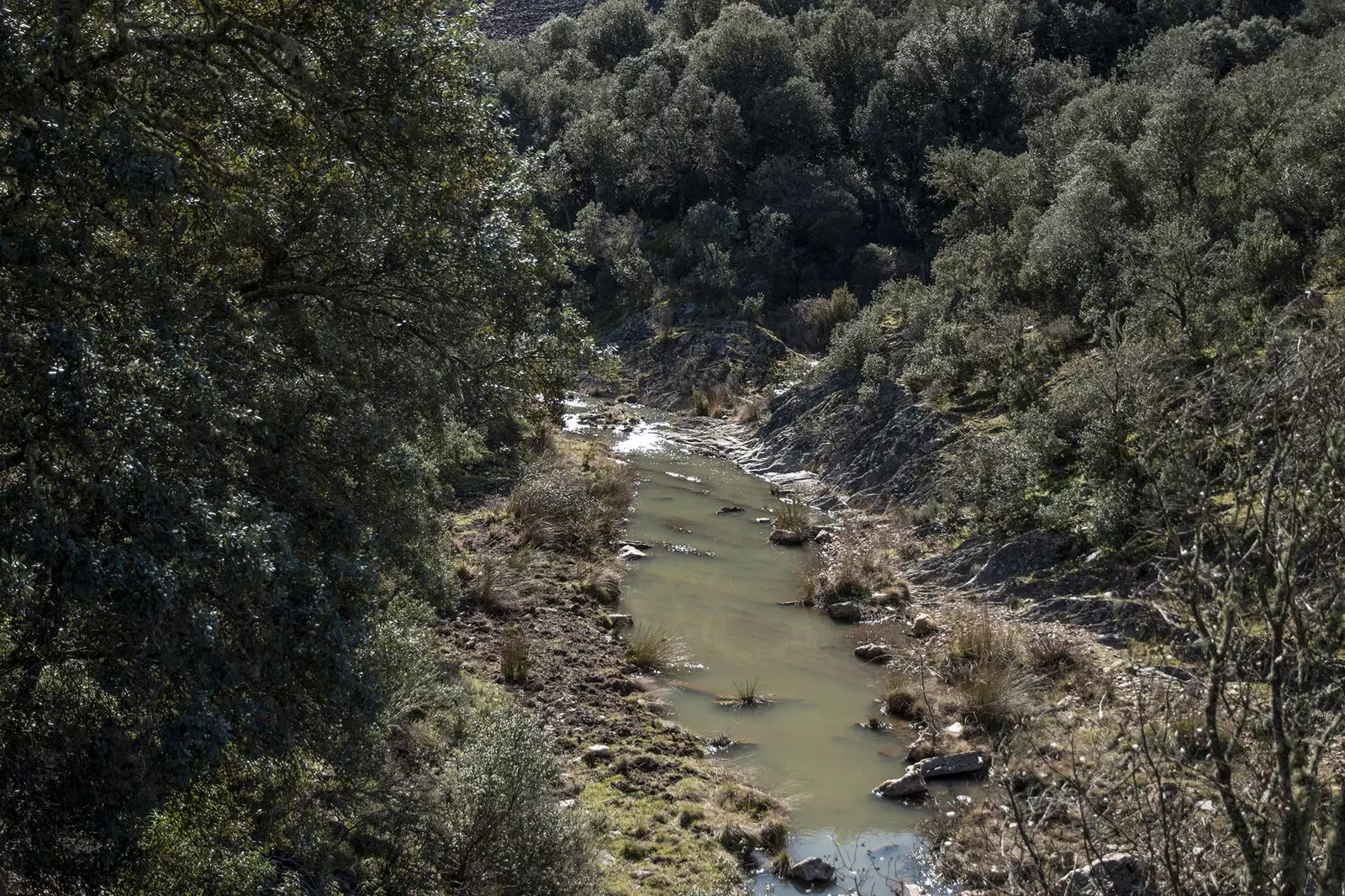
The boqueron path
Shortly after we will find on the right an interpretive panel on the Tirapanes cliff. The path is linear and of low difficulty, with a drop of just 20 meters, and the round trip takes two and a half hours.
Returning to the parking lot, we will see a path that goes to the right. Carries the Hermitage of Our Lady of Antigua , which we will see at the top of the mountain at 740 meters high. There we will find a viewpoint where we can enjoy the panorama offered by the rocky chaos of the Estena anchovy.
We begin our return home by going up the northern part until we reach to the Risco de las Paradas , with a small ideal viewpoint to look for black and griffon vultures with our binoculars, photograph the views and say goodbye to Cabañeros until next time.
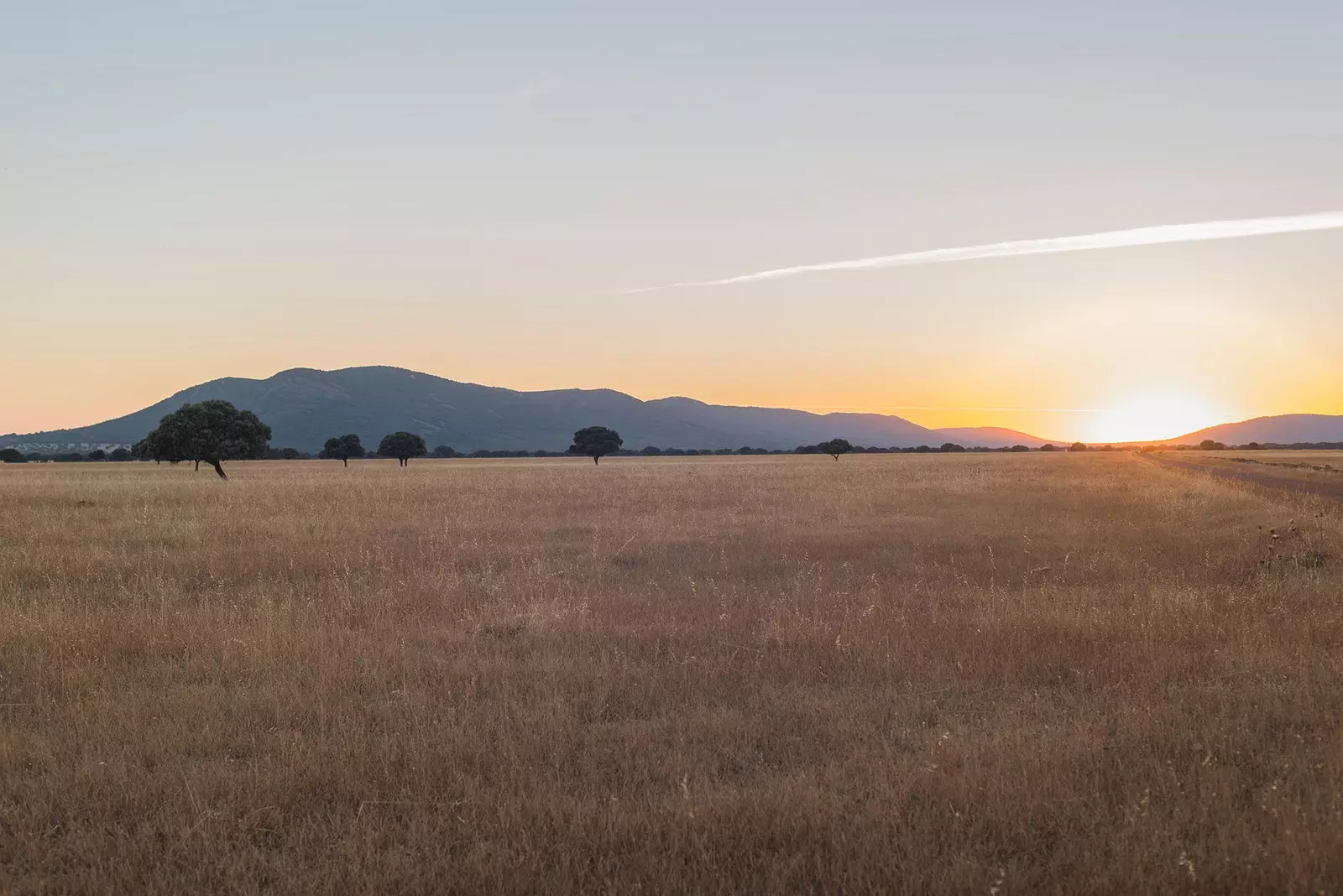
You always have to say goodbye to Cabañeros with a 'see you later'
